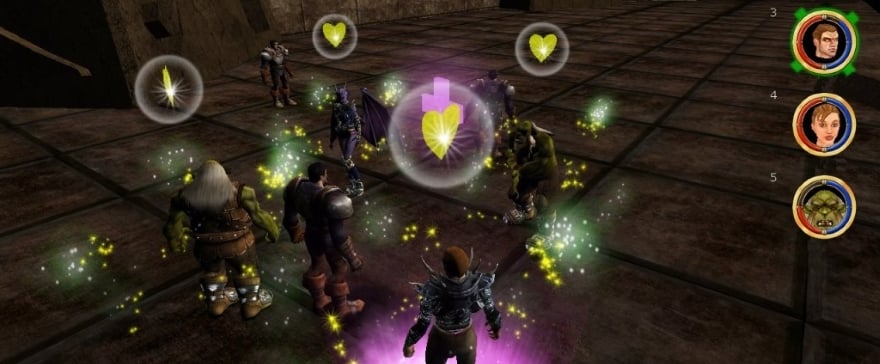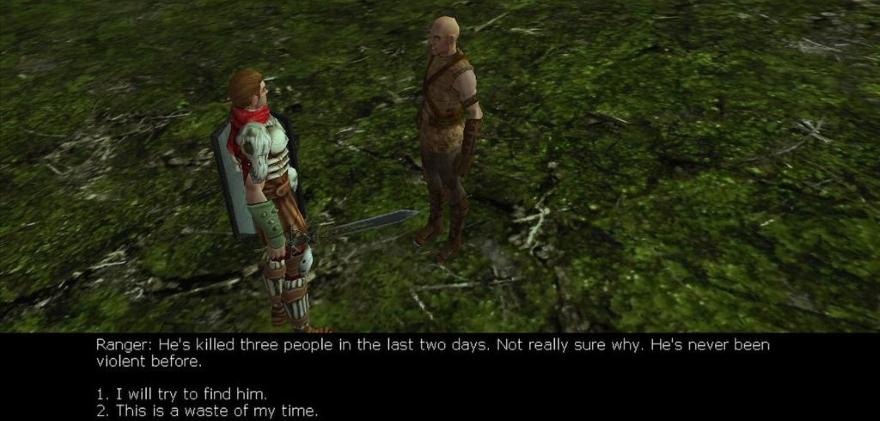
I think any MMO veteran has a private list of prematurely canceled games that he or she deeply wishes had been completed and launched. I wish we lived in a world where Project Copernicus was a joyous fantasy world rather than a sour news story or where Interplay had free reign to make Fallout Online.
But perhaps one of the greatest “could have been’s” is also rarely discussed these days due to the passage of time: Ultima X Odyssey. The second proposed sequel to Ultima Online showed true promise, an intriguing morality system, and an art style that still holds up today. The more I’ve learned about it over the years, the more I mourn the fact that it died before it was ever born.
So what made this game so special? What are we missing today by not having it? Let’s take a trip back to the early part of the 2000s to discover this Ultima successor.
The “X” stands for “please don’t let it suck”
With Ultima Online, a popular but graphically aging MMO on its hands, EA started looking into creating a sequel as soon as newer 3-D games began drawing in bigger crowds. A mere two years after UO’s launch, Ultima Worlds Online: Origins (also called Ultima Online 2) was in development by Origin Systems. By spring 2001, however, EA canceled the project and gutted Richard Garriott’s Origin Systems (Garriott had left a year previous to found Destination Games).
However, the idea of a sequel didn’t go away, and EA soon returned to the concept by giving the go-ahead for a fresh approach with Ultima X Odyssey. “We decided to do something that [was] based more on adventure and combat and being an epic hero,” a dev said when the game was revealed at E3 2003.
Instead of billing this new game as a direct sequel to Ultima Online, EA chose to take a different semantic path by honoring the game as the next true entry in the Ultima franchise… one that just so happened to take place online in a multiplayer environment. It was meant to follow the troubled Ultima IX (Garriott’s last entry in the series) and restore honor to the franchise. Hence the “X.”
By 2003, EA saw that its biggest MMO had long since been eclipsed by EverQuest and newer titles, and worries that an Ultima Online sequel would compete with its predecessor were no longer an issue. It doesn’t take much imagination to envision a frazzled meeting room where EA execs saw that they were getting trounced in the MMO department and were desperate to reclaim the mantle of king.
By merging an Unreal Engine-powered version of UO with the elements that made the Ultima series so beloved by many, EA hoped that Odyssey would be catapulted into greatness.
Lead Designer Jonathan Hanna hoped that this careful distinction would resonate with fans: “UXO will hearken back to the legendary world first brought to life in those classic games as well as creating new twists that will appeal to both old time fans and those who have never played an Ultima game.”
Welcome back, Avatar!
Odyssey took place in a new world known as Alucinor, which was actually both an experiment and a battleground of sorts. Hanna explained it better: “At the end of Ultima IX, we learn that the Avatar (the hero) and the Guardian (the villain) merged together at the climax of their final battle. UXO’s story begins with the Avatar and the Guardian struggling for control of the god-like being that they have become. The Avatar is losing this battle and creates the world of Alucinor, a place where adventurers can journey to and learn about the Virtues just as the Avatar did during his travels in Britannia. But, because the Guardian also has great influence over Alucinor, he has created his own minions to thwart any would-be heroes.”
Players had their pick of six races on their journey (Elves, Orcs, Pixies, Phodas, Gargoyles and Humans) and 12 classes or “Disciplines.” Then they would strike out to explore the land and better their characters through a mix of class- and skill-based leveling.
Another interesting concept that predated Lord of the Rings Online’s legendary item system by several years was Ultima X’s vision for intelligent trinkets that could be leveled up over time to create increasingly powerful items.
Walking the virtuous path
Returning for Ultima X was the concept of virtues. Instead of always asking you to kill the Big Bad who’s threatening to end the world, the Ultima series often tasked you with seeking out ways to better yourself in several “virtues.” In Ultima, these virtues were Compassion, Honesty, Honor, Humility, Justice, Sacrifice, Spirituality, and Valor.
Each virtue required you to perform different actions and engage in different styles of quests. On top of that, EA promised that you could make choices during your quests that would change the outcome and add to different virtues depending on what you decided to do. Would you take mercy on a starving thief (and increase your Compassion) or lay the smack-down on him (and up your Justice)? Long before BioWare promised the same sorts of tough moral and ethical decisions in The Old Republic, the Odyssey team wrapped an entire game around the concept.
The now-defunct website explained it further: “Through successfully completing Virtue quests, you’ll gain Virtue points, which you’ll be able to spend in various ways to enhance both your items and your character. Ultimately, you’ll create multiple characters, all of which will follow the Virtues, which will enable your original character to reach the elite status of Avatar.”
Virtues weren’t just arbitrary numbers, either; each had associated skills and perks that got better the higher up you went. Compassion would give you healing abilities, while Honor would boost your defensive capabilities.
Occasionally players could stumble across so-called virtue items, which could be imbued with special properties — if your related virtue was high enough.
Fast and furious: Medieval warfare
Even back in 2003, players and developers alike were looking for ways to get out of the stale auto-attack with special abilities routine in MMO combat. Ultima X promised to deliver a much more dynamic battle experience, allowing players to dodge and move out of the way of attacks while requiring them to keep the enemy in their sights to strike back.
As Hanna put it, “In UXO, you are in control of every sword swing, every spell cast, and every block.” Over the course of combat, players would build up “momentum” that could be spent for powerful combo attacks.
In regard to PvP, Ultima X was more in line with Ultima Worlds Online: Origin’s vision than Ultima Online’s. Consensual PvP was the order of the day, with participants choosing between both small- and large-scale battles. The game would’ve had a ladder system to encourage the competition as well as a unique wagering system in which players could put up items or gold and then fight for a winner-take-all reward.
Pardon the obvious pun, but Ultimately, the team focused more on what was enjoyable and less on grand virtual experiments. “We aren’t interested in using UXO’s players to test a bunch of high-falutin theories about virtual communities,” Hanna said. “Our primary goal is to bring people together as a community and create a fun game.”
Endgame
Despite reports that Ultima X was nearing completion, EA once again pulled the plug on an Ultima Online sequel, echoing its reasoning from last time. On June 30th, 2004 — mere months before World of Warcraft and EverQuest II launched — the company announced that Ultima X was no more.
“We feel that Ultima Online is where we need to focus our online efforts and most of my team will be moving to the UO expansion pack, the UO live team, and an unannounced Ultima Online project. Development on UO will be greatly enhanced as we consolidate our resources behind that franchise,” Producer David Yee wrote in his farewell letter.
Reportedly, one of the biggest reasons behind the project’s death was EA’s decision to relocate the Austin, TX team to California, a move at which many devs balked. With the relocation a failure, the game’s development was hobbled and EA felt it had no choice but to give it the axe.
So what if Ultima X: Odyssey had launched in late 2004 as planned? Chances are that it would’ve struggled in much the same way that EQII did following WoW’s industry-shattering release. Still, its questing system — which was incredibly revolutionary for the time — and Ultima moniker could’ve kept it afloat enough to establish a healthy playerbase.
Unfortunately, we’ll never know.
 Believe it or not, MMOs did exist prior to World of Warcraft! Every two weeks, The Game Archaeologist looks back at classic online games and their history to learn a thing or two about where the industry came from… and where it might be heading.
Believe it or not, MMOs did exist prior to World of Warcraft! Every two weeks, The Game Archaeologist looks back at classic online games and their history to learn a thing or two about where the industry came from… and where it might be heading.


















